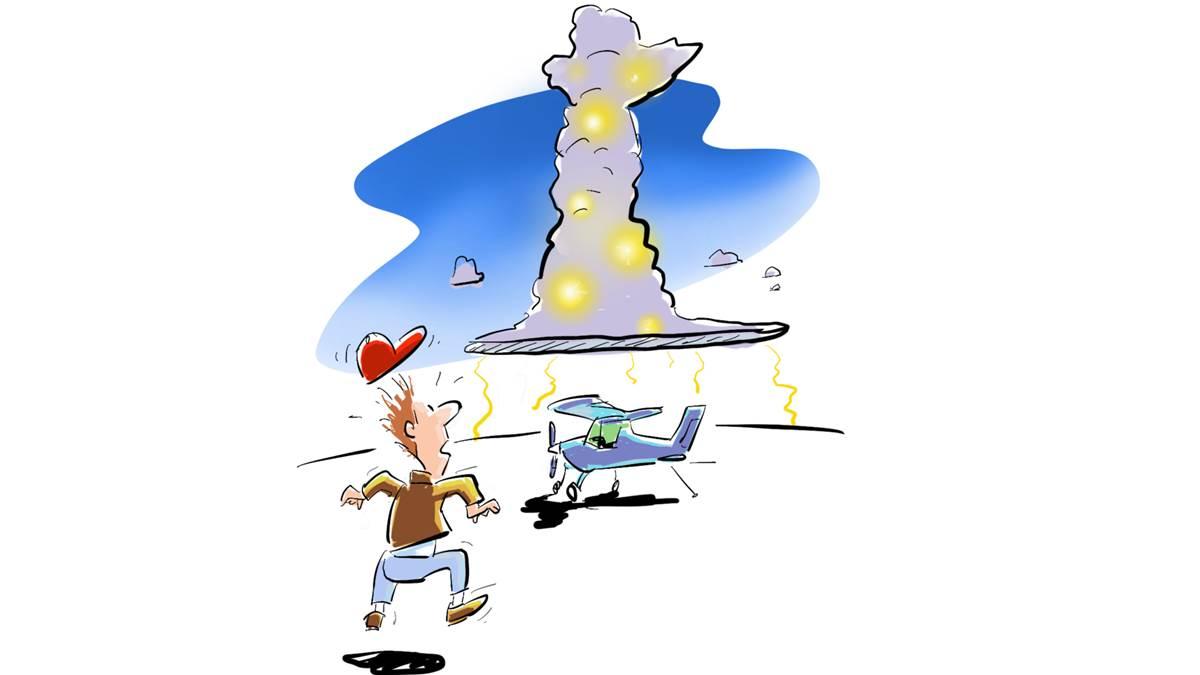
1. True or false: The first flight attendant was a man.
2. Which of the following does not belong?
A. adiabatic
B. orographic
C. frontal
D. air mass
3. On June 28, 1965, Pan Am Flight 843 departed San Francisco carrying 143 passengers. At 800 feet, the number 4 engine of the Boeing 707 experienced a catastrophic turbine failure that ruptured the right outboard fuel tank and ignited the fuel. The explosion caused the engine and outboard 25 feet of the right wing to separate from the aircraft. The flight miraculously landed safely at nearby Travis AFB. What unusual advisory did TWA and Boeing issue to all Boeing 707 pilots?
4. With respect to a biplane, why doesn’t the high-pressure area under the top wing interfere with and reduce the effectiveness of the low-pressure area above the bottom wing?
5. How tall are the tallest thunderstorms?
6. Two identical airplanes are climbing at the same density altitude. One, however, is climbing within a low-pressure area and the other within a high-pressure area. Which airplane has the better climb performance?
7. True or false? Some modern turbofan engines produce more thrust than was used to propel Alan Shepard and Freedom 7 into suborbital space flight on May 5, 1961.
8. Why were the vertical tail surfaces of Northwest Airlines’ aircraft painted solid red (or nearly so)?
Test Pilot Answers
1. True. A German steward, Heinrich Kubis, worked aboard the LZ 10 Zeppelin Schwaben in 1912. He also was aboard the Hindenburg and survived by jumping out of a window. Cabin boys were used aboard some airlines in the 1920s. Ellen Church was the first female flight attendant, a “skygirl,” in May 1930, and the pilot of her first flight is said to have been Elrey Jeppesen.
2. A. There are orographic, frontal, and air mass thunderstorms, but there is no such thing as an adiabatic thunderstorm.
3. A revision to the Boeing 707’s minimum equipment list stated that: “The Boeing 707 may be dispatched with no more than 25 feet missing from either wing.”
4. Such interference does occur but is insignificant when the vertical distance between the two wings (gap) is greater than the longest chord of either wing.
5. Mature thunderstorms routinely reach 40,000 to 60,000 feet, but it is not unheard of for them to grow as high as 75,000 feet in the tropics.
6. The airplane climbing within the low has the best climb performance. This is because air within a low rises and air within a high subsides. An airplane obviously climbs better in rising air than it does in subsiding (or sinking) air.
7. True. Some turbofan engines produce more than 100,000 pounds of thrust. The Mercury-Redstone 3 rocket that propelled America’s first manned space flight produced only 78,000 pounds of thrust. (One large turbofan engine produces more thrust than all eight engines of a B-52B, C, D, or E.)
8. During the airline’s infancy, it operated mostly in the northern United States. The tails were painted red to enhance locating a downed aircraft in the snow.



